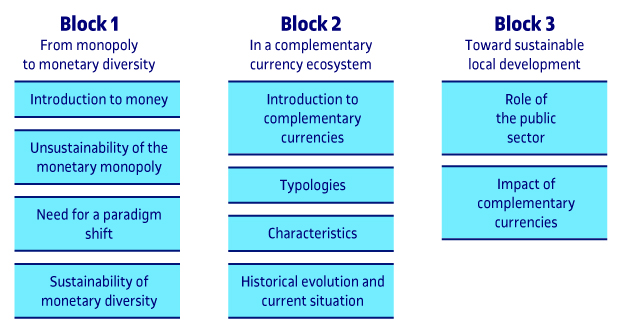Money is a part of our everyday lives. Wherever we look, whatever we do, the presence of money is directly or indirectly felt. Despite this, for the majority of us money remains in our subconscious, perceived as something that is just there, a necessity that is nonetheless beyond our control. We rarely stop to think about what it is, who creates it, where it comes from, or what gives it its value. And if we do stop to reflect, we tend to do so from the most capitalistic perspective, based on the most deeply-ingrained, traditional financial education, full of confusing concepts such as the gold standard, compound interest, and the relationship between savings and finance.
Money has undeniably been one of the most important and beneficial innovations in human societies throughout history. Without money, it would be impossible to conceive of the levels of well-being and economic efficiency we enjoy today. Without money, the individuals in a given society would have to systematically resort to trading some goods for others and, clearly, reciprocal agreement would have to exist between the parties to any economic exchange. This would be highly complicated and not in the least practical. Money is the instrument that facilitates the exchange of goods and services, economic specialization and the division of labour, contributing to the global efficiency of an economy and, in general, of a society. It could be argued that today’s societies would be completely unworkable and inconceivable without money.
But do we know what money really is and what it represents? Are we aware that the pursuit of efficiency is perhaps the cause of the current unsustainability of our societies and our planet? Have we asked ourselves if alternative courses of action exist? And, if so, what are they and to what extent are they being implemented and consolidated?
The aim of this COURSE is to provide answers to these and other questions. The level is intended to be informative as well as academic, so that the contents are accessible to as many people as possible. The intention is to raise awareness of all that surrounds the concept of money and provide the basic knowledge with which people can freely choose how to proceed in the future.
To achieve this aim, the COURSE has been structured in three different blocks with the following contents:
- Block 1: From monopoly to monetary diversity. This block provides an introduction to money, what it is and what it represents, and goes on to analyse the situation of the current monetary system, in the most capitalistic sense of the term. Subsequently, the contributions made by complementary currencies to economic, social and environmental sustainability are analysed from a complex thought perspective. The primary references used were the studies of Bernard Lietaer.
- Block 2: In a complementary currencies ecosystem. This block introduces complementary currencies, what they are and what they represent, as well as their historical evolution and different typologies. There follows an analysis of their current situation, at national and international level, their impact on sustainable development, and their typical lifespan. The primary references used were research studies by Gill Seyfang, Noel Longhurst and Neil Hughes.
- Block 3: Toward local, sustainable development. This block analyses how complementary currencies can be implemented through public sector initiatives, to reactivate a local economy as well as promote social cohesion and reduce the ecological footprint of an area. The primary references used were research studies conducted by the Community Currencies in Action project (CCIA).
